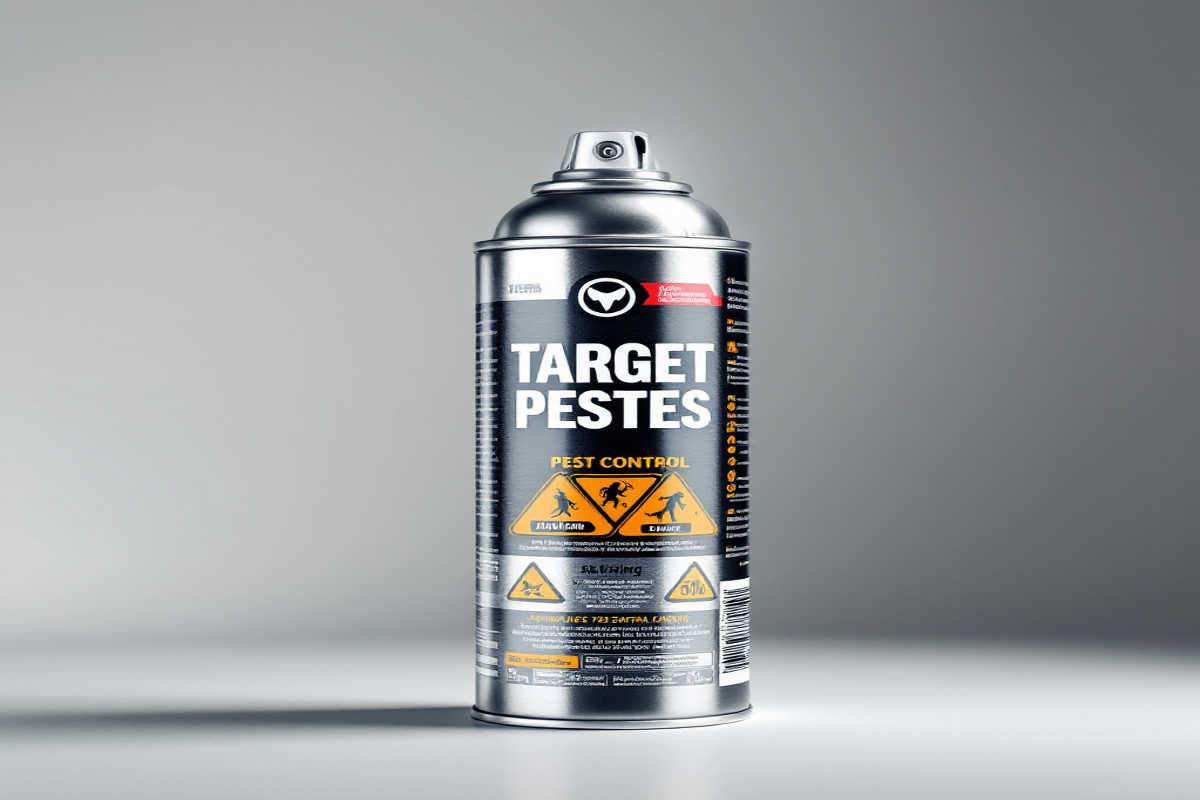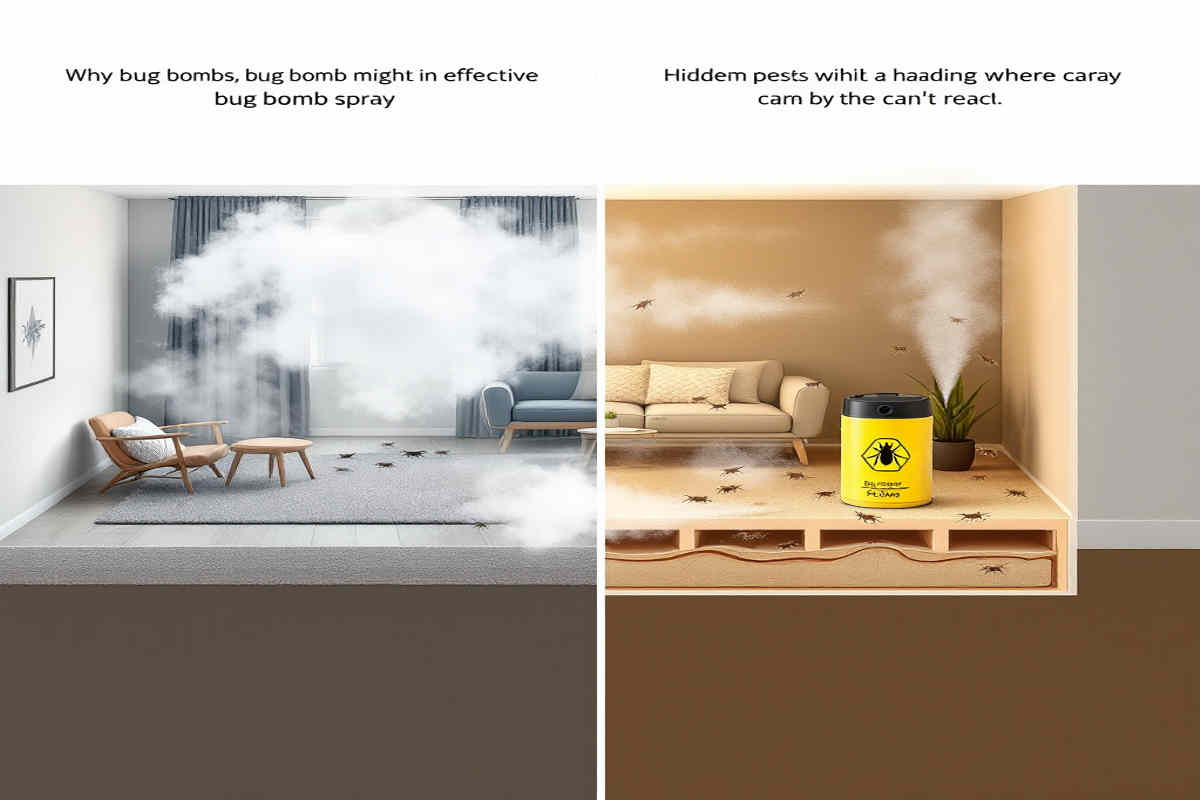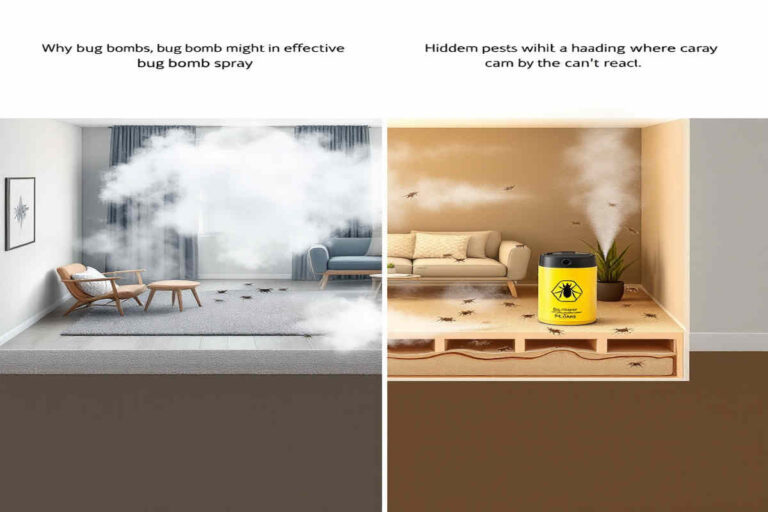Bug bombing, also known as using total release foggers, is a standard method for tackling pest infestations in homes. While it’s a widely used solution, many homeowners ask the same question: how long does it take to bug bomb a house? Beyond knowing the time it takes, understanding the process, preparation, and safety measures is crucial for effective and safe pest control.
What Is Bug Bombing?
Bug bombing, or total release fogging, is a pest control method where a pressurized canister releases insecticide as a fine mist or aerosol. This mist fills the room and targets pests hiding in cracks, crevices, and other hard-to-reach areas.
Pests Targeted by Bug Bombs
Bug bombs are primarily used to eliminate common household pests. These include:
- Cockroaches
- Ants
- Fleas
- Spiders
- Bed bugs (though they are less adequate for severe infestations)
How Bug Bombs Work
Once activated, the bug bomb releases a chemical mist that disperses throughout the room. This mist settles on surfaces and penetrates small spaces where pests hide. The insecticide interferes with the pests’ nervous systems, effectively eliminating them.
Why Timing Matters
The duration of the bug bombing process is critical for two reasons:
- Effectiveness: The insecticide needs enough time to spread and kill pests.
- Safety: Premature re-entry into the home can expose you to harmful chemicals.
Pre-Bug Bombing Preparation
Preparation is key to ensuring that bug bombing is both practical and safe. Follow these pre-bombing steps carefully to avoid mishaps.
You may also read (earwigs invading my home).
Clearing the House
Remove or cover any items that could be contaminated by the insecticide, such as:
- Toys, clothing, and bedding
- Food items and utensils
- Electronics or sensitive items
- This prevents chemicals from settling on these surfaces, which may later come into contact with children or pets.
Removing Pets and People
Pets and humans must vacate the house during the bug bombing process. Insecticides can be toxic when inhaled or ingested, so keeping everyone out for the recommended duration is crucial.
- Pets: Relocate all pets, including fish (as insecticides can contaminate water).
- People: Ensure all family members leave the house before activating the bug bomb.
Covering or Removing Food
Food contamination is a serious risk when using bug bombs. Store food in airtight containers or remove it from the house entirely. This applies to both fresh and packaged food items.
Turning Off Smoke Alarms and Air Circulation
Bug bombs can trigger smoke alarms, so turn them off temporarily. Additionally, shut down HVAC systems, fans, or air circulation systems to prevent the insecticide from spreading to unintended areas.
Securing Rooms
Close all doors and windows to contain the insecticide within the targeted area. This ensures maximum exposure to pests and prevents the mist from escaping outside.
How Long Does It Take to Bug Bomb a House?
Activation and Release Process
The actual insecticide release from a bug bomb typically takes a few minutes (2-5 minutes). However, the duration of effectiveness extends beyond this initial release.
Minimum Wait Time Before Re-Entry
To ensure safety, most manufacturers recommend staying out of your home for 2-4 hours after activating a bug bomb. This allows the insecticide to settle and do its job.
Optimal Exposure Time
Giving the insecticide 4-6 hours to work is advisable for the best results. This extended duration ensures that even hidden pests are exposed to the chemicals.
Factors Influencing Duration
Several factors can affect how long bug bombing takes, including:
- Size of the house: Larger spaces may require more time for the mist to disperse evenly.
- Severity of infestation: Severe infestations may require longer exposure times or multiple treatments.
- Type of bug bomb: Different brands and products have varying instructions regarding time requirements.
Importance of Following Manufacturer Instructions
Every bug bomb product comes with specific guidelines. Always follow these instructions to avoid safety risks and ensure effective pest control.
The Science Behind Bug Bomb Duration
Understanding the science behind how bug bombs work can help you appreciate why timing is so important.
How Insecticide Disperses and Settles
When a bug bomb is activated, the aerosolized insecticide disperses into the air and settles on surfaces. This process ensures that pests hiding in cracks and corners are exposed to the chemicals.
You may also read (bluebottle flies in your house).
Risks of Premature Re-Entry
Entering your home too soon after using a bug bomb can expose you to harmful chemicals. This can lead to health issues such as:
- Respiratory problems
- Skin irritation
- Eye irritation
Ventilation After Bug Bombing
Proper ventilation is essential once the wait time is over. Opening windows and doors for at least 30 minutes will help remove any lingering insecticide from the air, making it safe for re-entry.
Post-Bug Bombing Steps
After the bug bomb has done its job, several essential steps exist.
- Ventilate the House: Open windows and doors for at least 30 minutes. This allows fresh air to circulate and removes lingering chemicals.
- Clean Surfaces: Wipe down surfaces, especially in areas where food is prepared.
- Check for Residual Chemicals: Look for any signs of insecticide residue and clean as needed.
- Reintroduce Pets and Family: Only bring people and pets back into the house once fully ventilated and cleaned.
Safety Tips for Bug Bombing Your Home
- Read Instructions: Always follow the manufacturer’s guidelines.
- Use Protective Gear: Wear gloves and a mask to handle the bug bomb.
- Keep Children and Pets Safe: Ensure they are out of the house for the entire process.
- Avoid Mixing Chemicals: Never use multiple bug bombs or mix them with other pest control products.
- Consult Professionals: For severe infestations, consider hiring a professional exterminator.
Common Mistakes to Avoid When Bug Bombing
- Re-entering Too Soon: Always wait the recommended time before going back inside.
- Skipping Preparation: Failing to remove food, toys, or pets can lead to contamination and safety risks.
- Using Incorrect Quantities: Too many bug bombs can lead to overexposure, while too few may be ineffective.
- Neglecting Ventilation: Proper ventilation is critical for removing residual chemicals.
- Over-Reliance on Bug Bombs: Bug bombs are not a standalone solution. Combine them with other pest control strategies for long-term results.
Alternatives and Complementary Pest Control Methods
Bug bombs are just one tool in the pest control arsenal. Here are other methods to consider:
- Integrated Pest Management (IPM): Combines various methods like sanitation, exclusion, and monitoring.
- Traps and Baits: Effective for targeting specific pests.
- Targeted Sprays: Useful for treating localized infestations.
- Professional Exterminators: Ideal for severe or recurrent infestations.
You may also read (termite nest in your house).

